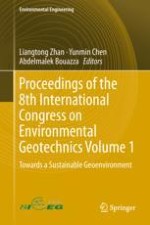This book gathers selected papers presented at the 8th International Congress on Environmental Geotechnics (ICEG), held on October 28 - November 1, 2018 in Hangzhou, China. The theme of the congress is “Towards a Sustainable Geoenvironment”, which means meeting the needs of the present generation without compromising the ability of future generations to meet their own needs. Under this theme, the congress covers a broad range of topics and provides an excellent opportunity for academics, engineers, scientists, government officials, regulators, and planners to present, discuss and exchange notes on the latest advances and developments in the research and application of environmental geotechnics.
